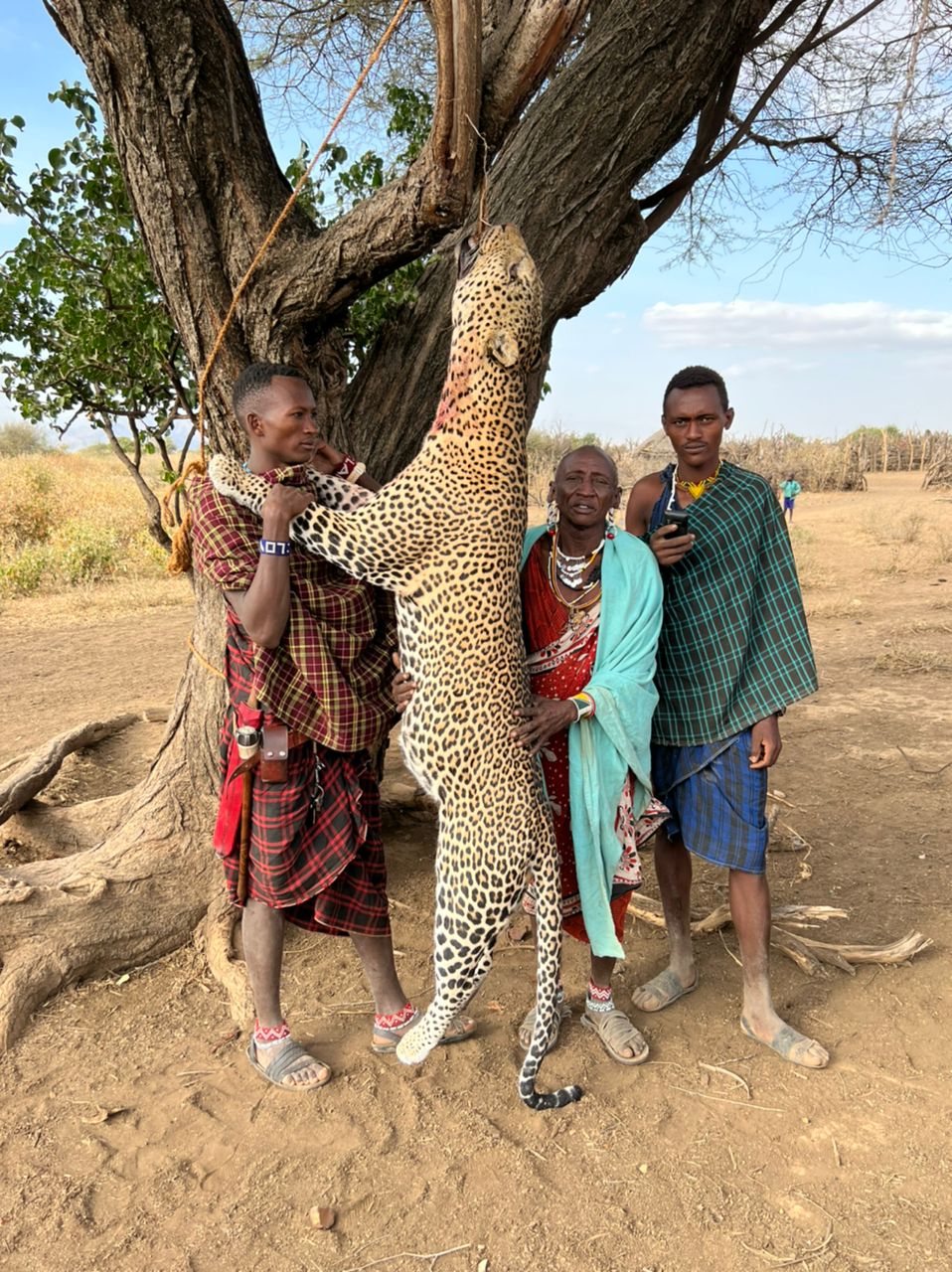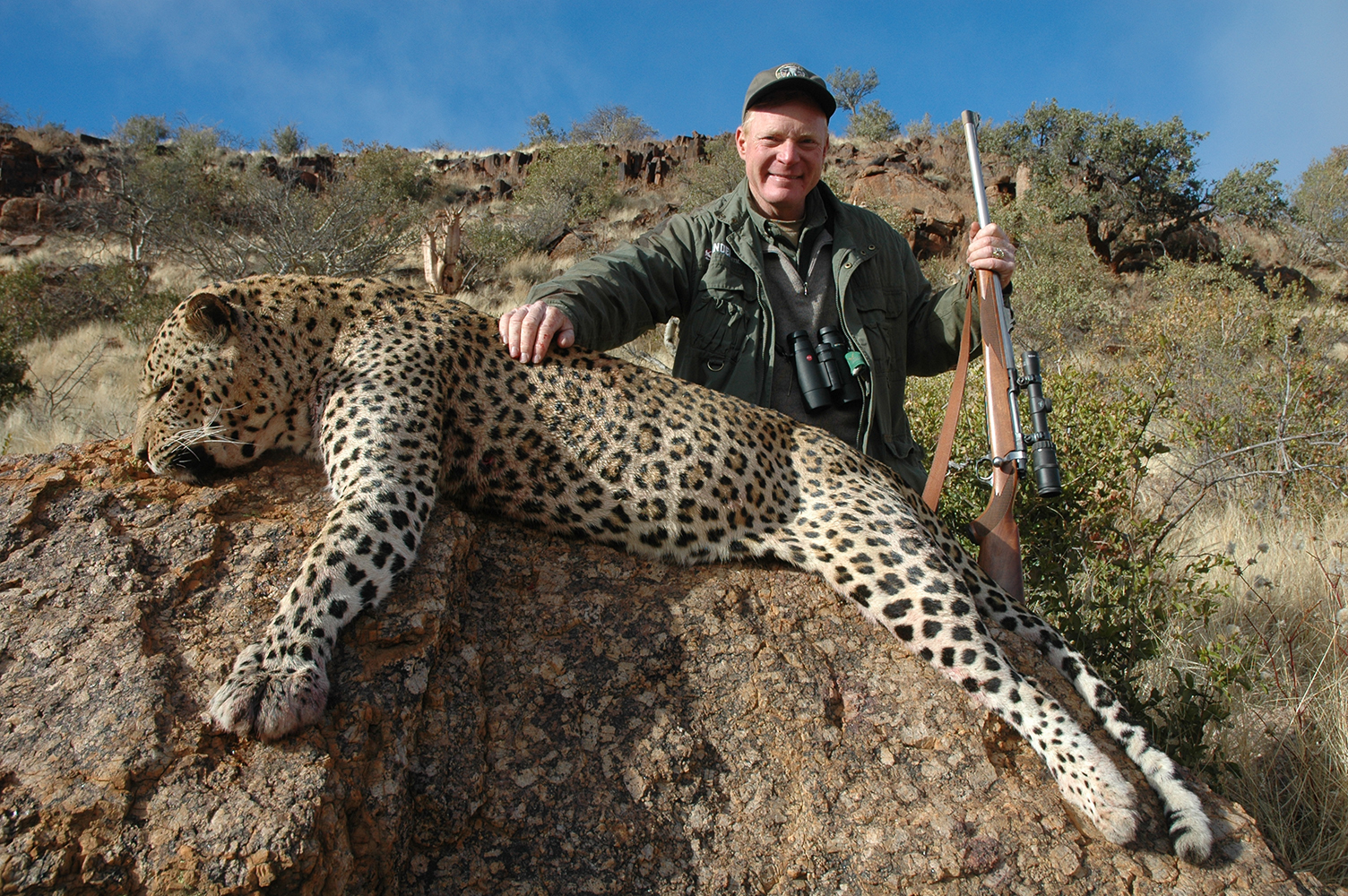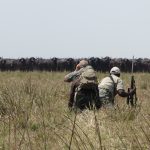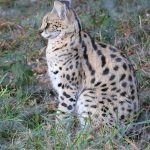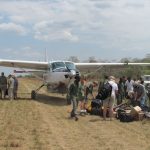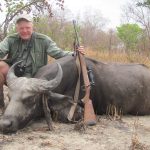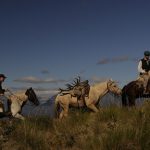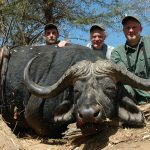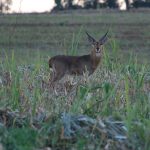These spotted cats are challenging, and there are no guarantees.
Photo above: Boddington’s biggest leopard was taken in Namibia, back when hound hunting was still legal.
Convention season is upon us, the world’s largest gatherings of African outfitters converging on Dallas, Houston, Nashville, and more. There are plenty ways to find great hunts today, but there’s nothing like shopping first-hand. Maybe this year you’ve decided you’d like to hunt a leopard.
Good plan. Regardless of what you might have heard, leopards are not endangered. In fact, they are thriving. At least, in the countries where they are hunted and where we, as hunters, place value on them. Leopards are hard to count, but some estimates suggest over two million in wild Africa, and they raid chicken coops in the suburbs of every major city in sub-Saharan Africa. Outside the ’burbs, they take livestock, but are tolerated in hunting countries, again because they have value.
Okay, goat-eating leopards aren’t your problem, so why would you wish to hunt one? Well, after the buffalo, the leopard is the most available and affordable of Africa’s Big Five. The hunt is a fascinating chess game, with no certain outcome, and the leopard is very much dangerous game, considered by some the most dangerous. Thanks to antibiotics, I don’t agree, but, well-camouflaged and fast, the leopard is the most likely to hurt you. Unlike the rest of the Big Five, there is almost no danger in hunting a leopard… until you shoot. Do it right, game over. Do it just slightly wrong, and the stuff is in the fan.
When both great cats were often on license, it was common to hunt lion and leopard in concert. Today, both are very specialized hunts. Back in the day, it might not have been unusual for a hunter to take both cats on the same safari. This never happened to me, nor have I been in camp when both lion and leopard were taken.
In 2010, on safari with Michel Mantheakis in Tanzania’s Rungwa with hunter Ron Bird, a lion was the primary goal. As Dave Fulson likes to say, “we had leopards swinging from every tree.” Sitting on a bait, I saw a leopard lose its purchase and fall from a lion bait, which was comical. Another day, walking up to check a blind, we woke up a sleeping leopard. Most of the leopards we saw or had on cameras were females or young males, but we also saw shootable males. Ron had taken a nice leopard on a previous safari, didn’t want another, and got his lion on the last day.
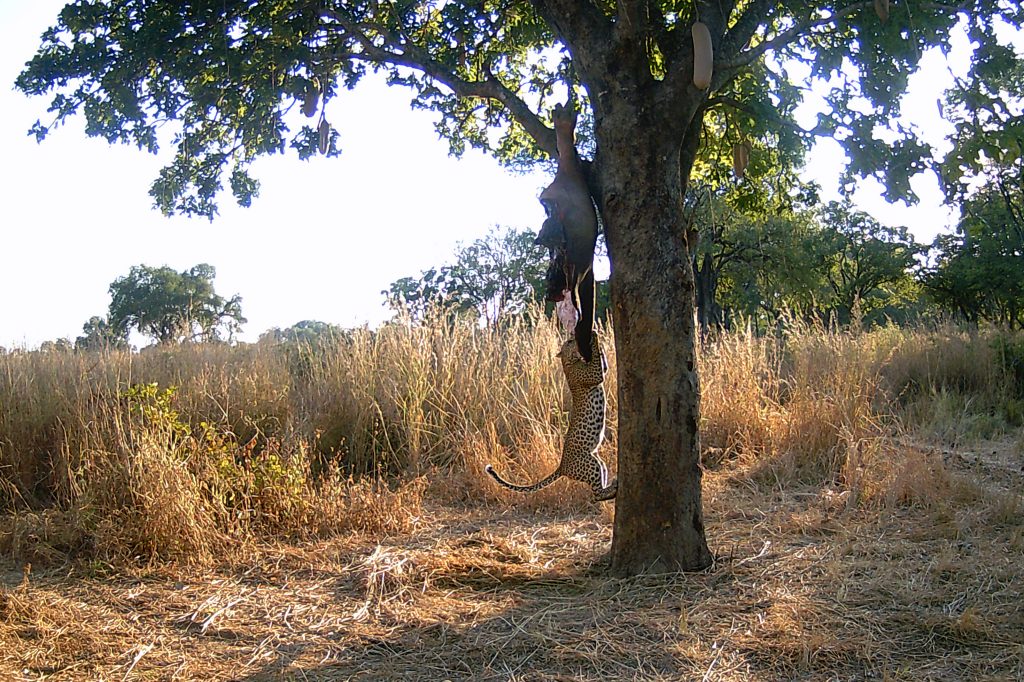
In July ’21, I was with son-in-law Brad Jannenga in Zambia’s Luangwa Valley with PH Davon Goldstone. Also a lion/leopard hunt. Brad didn’t get his lion on that try but, again, we had leopards “swinging from trees” on our lion baits. Most were females or young males, but when a big male hit a distant bait, it was time to strike.
Perfect setup. The tree was in a small opening, long grass close by, a small sand river between bait and blind site. This follows the “BOB” rule: Bait, Obstacle, Blind, with a natural barrier separating blind from bait. We quickly built a blind, cleared the shooting lane, and were sitting in the blind before 4:00.
We might have been there an hour when the cat showed up. The shot angle was okay, but weird, sort of low behind one shoulder and up through the off shoulder. The cat launched high and left, under its own power (never a good sign). We heard it land heavily in long grass, then silence.
Brad felt certain, but Davon’s video was indefinite so we gave it some time. With the luxury of light fading, we got organized, and stepped into the tall, threatening grass. Brad was right. His shot was perfect; the cat lay dead just twenty yards in.
Wow, a one-hour leopard hunt, on Brad’s first try. Forty years ago, I sat in a blind for sixty-some nights before I got my first leopard. There are more leopards today than there were back then…and some hunters are luckier than others. Sounds like Tanzania and Zambia must be the best places to hunt leopard, right? Yes, probably. However, I’ve had leopard on license multiple times in both countries, never got a leopard in either. No matter where you are, there are no guarantees on leopard.
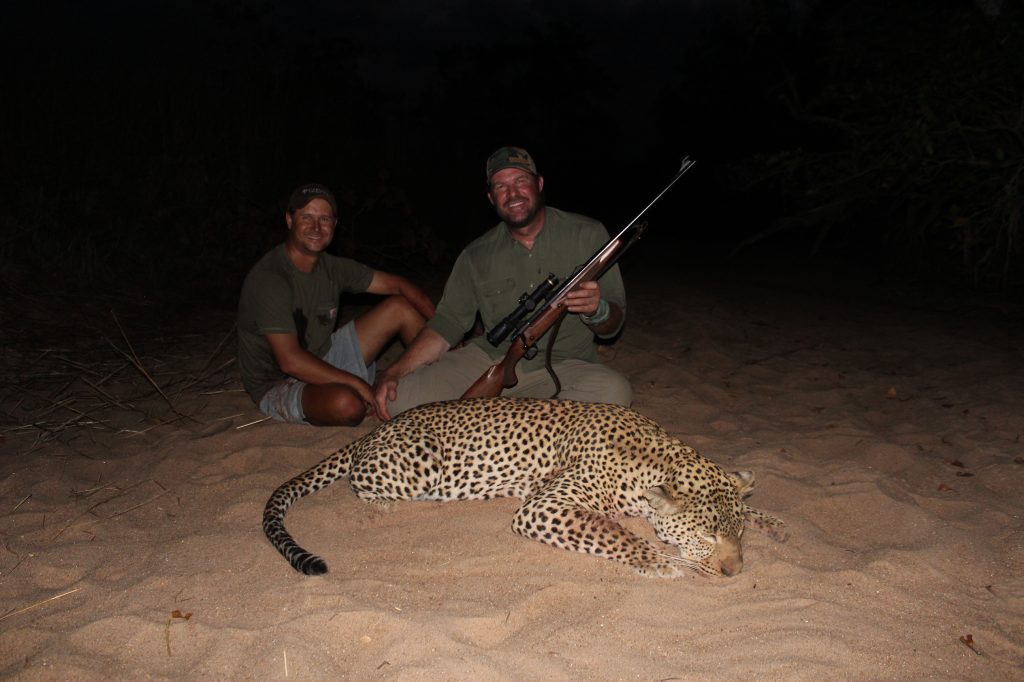
With baiting, you’re trying to make a highly skilled predator accept a piece of meat the leopard knows it didn’t kill. With daylight baiting, you’re trying to get a highly skilled nocturnal predator on bait at a place and time of your choosing. Not easy.
It’s encouraging to have multiple leopards feeding, but females and youngsters do you no good. You need a mature male to take a bait. Zambia and Tanzania are great countries for hunting leopard. However, I’m not certain they are better than other options. At this writing, other countries open to leopard hunting, with trophies importable to the US, include Botswana, Mozambique, Namibia, and Zimbabwe.
I took my first leopard in Botswana, when times were different. Newly reopened, Botswana is excellent, with just seventy permits allocated in 2022. However, these are pricey safaris, and Tanzania and Zambia are also expensive. The most affordable leopard hunts are probably in Namibia and Zimbabwe. Over the years, I’ve had the most success in both countries. However, I’ve been beaten in both, and I’ve also failed in Mozambique and in South Africa.
All the current options are good. South Africa hasn’t issued leopard permits for several years, but the thick bush of the Limpopo drainage is perfect habitat, and known to produce huge leopards. Uganda has also reopened leopards with a small quota. This country was awesome for leopard before Idi Amin, and should be good again.
However, getting your leopard isn’t as much about location as strategy. Since you only need one, you can get a big leopard on bait anywhere they occur throughout Africa’s long season. That said, timing is important. Typically, odds are best early in the season, just after the rains when the bush is thick. Prey species are widely dispersed, so predators must hunt harder to make natural kills… and are more likely to take a bait. Later, as ground water dries, prey concentrates, and predators have it easier. Pay attention to when the warthogs drop their young, usually about October. When every sow has a litter, leopards have easy pickings, and in my experience it’s difficult (although never impossible) to get cats to hit baits.
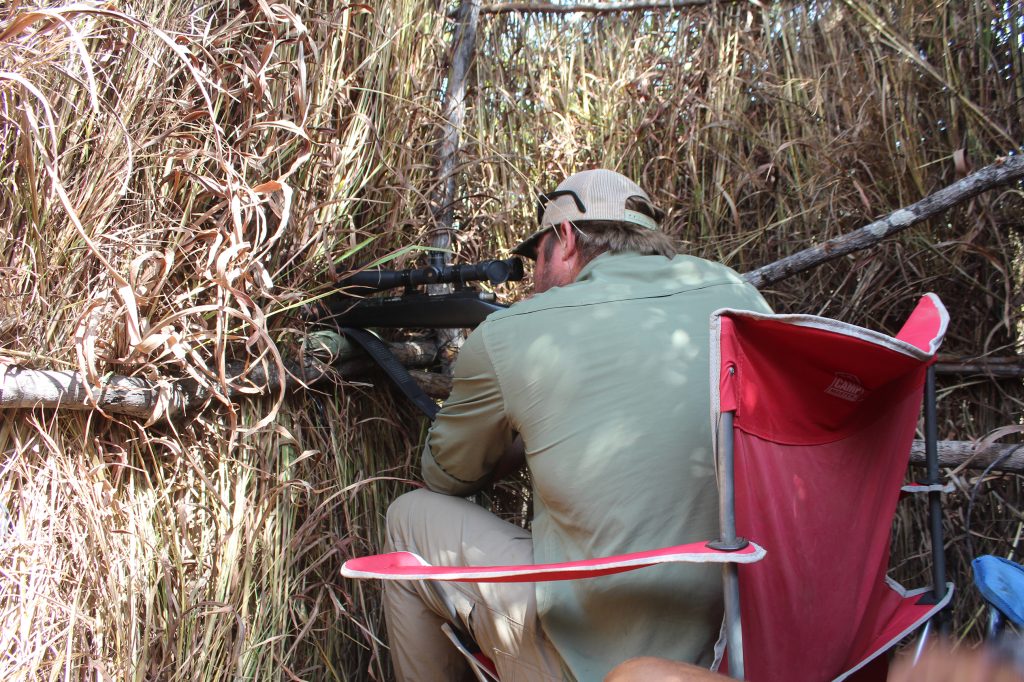
Cool weather is good, because baits last longer… but not too cold. On an unsuccessful leopard hunt in Namibia one July, it got really cold, with our baits frozen hard, thus not giving off scent. Conditions and seasons vary from place to place, but in Southern Africa, April through July are usually good leopard months.
Hunt for as long as you can. Ten-day hunts are fairly normal today, but two weeks much better. Consult a lunar calendar, and try to have dark of the moon about, or just past, the mid-point of your hunt. All radio-collared studies concur that leopards are least active when the moon is bright, because their hunting success is reduced.
Concentrating on Old Spots is critical. My failures in both Tanzania and Zambia were largely my fault: There were other animals I wanted to hunt, and I got side-tracked. To get a leopard, you must hunt leopard. The processes of adding and freshening baits, checking baits, and dragging never stop, an exhausting and smelly business. The bait you don’t check is the one that gets hit, and there must be enough meat remaining so the leopard will return.
As a method, I support use of hounds because it’s selective as well as successful. Hounds are still used on private land in Zimbabwe and in some parts of Mozambique. Hunting with hounds is far from a sure thing and, because trained packs are few and precious, hound hunts are more expensive. Across Africa, most leopards are taken by baiting. I think chances are best in wild, lonely country, where leopards can move freely with confidence. Leopards in livestock country are clever and difficult. Where legal, night hunting ups the odds, but shooting in the dark is more difficult.
Finally, you must find a PH who understands—even enjoys—hunting leopards. Some few have exceptional track records, but be wary of this. Nobody, ever, is a hundred percent on leopards. Some outfits run long strings of success, but I’m leery of a PH who boasts that his last dozen leopard hunters were successful. Strings are made to be broken, and will be.
Find a good outfitter, in a good area. Plan well, then hunt as long and as hard as you can. You will probably be successful, but understand going in: There are no guarantees on leopards.
